Basic Forms – Timeless Design: New Acoustic Options
Our industry is not short of interesting people, nor of talented people, but it’s always a treat to meet a new one – both talented and with an interesting and unusual background. So when I met Bryndis Bolladottir at the Unika Vaev showroom this past NeoCon, I knew I’d be writing this column; I just wasn’t sure when.
There are many interesting facts about Ms. Bolladottir. As I guessed when I met her and as many of you will have guessed by her last name, she is from Iceland. There are fewer than 500,000 people living in Iceland, so it’s quite rare to meet somebody from there when in Chicago. She reports a life-long fascination with textiles and wool from Icelandic sheep in particular, but more on that later.
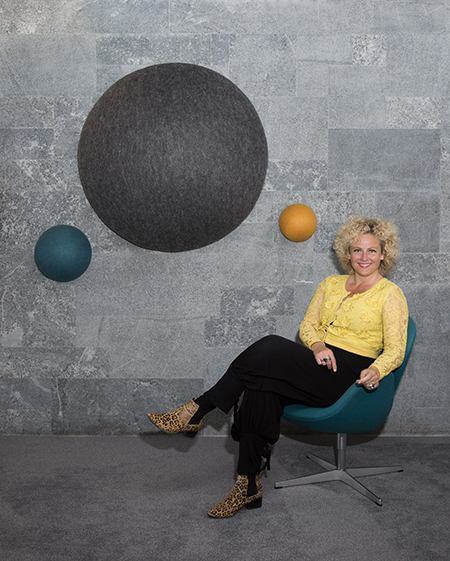
She is an artist by training, background and inclination, having graduated in 1999 from the Iceland Academy of the Arts with a B.A. in textiles. So perhaps it’s not surprising that her award-winning sculptures have been in textiles and Icelandic wool in particular.
In a telephone interview this week, she said, “I got acquainted with wool as a material for making art pieces in the art school. But it was after my graduation from art school when I moved to Stockholm for about two years when I started to seriously work with Icelandic wool. I’d had a fascination with this material since I was a young girl, but I had to find a way to work with it – a way to make it mine; to add my touch to it. So I’ve been working with the material, studying it and testing it in many ways for about 20 years now.”
Her early work was strictly artistic – sculptural, inspired by the natural forms she saw all around her. She was nominated to participate in shows, both in Iceland and abroad and sold pieces through galleries. Her career as an artist was very much on track.
Her beautiful and functional artwork speaks to the modern homeowner who lives in a home where open spaces, high ceilings and large windows merge with hardwood or tiled floors. While certainly appealing, such interiors often bring with them acoustical problems that need to be addressed and solved.
In 2006 a woman who wanted to commission some work approached her. Ms. Bolladottir recalled, “She knew my pieces and she said, ‘I think your pieces will fit my house, because I have a very nice minimalism house, but I need something acoustic. I don’t like textiles, but I like your pieces.’ I was just making sculptures, and I hadn’t thought about their acoustic properties, but she saw that in them where I hadn’t.”
“Encouraged by this casual and inspiring encounter, I started transforming my sculptures into functional artwork aimed at improving the acoustics and ambience of interior spaces but keeping the work’s visual appeal.”
“in 2007 through my work on acoustics, I started a partnership with a small start-up company located in East Iceland, where felting techniques for Icelandic wool were being developed. We started off on a shared trial and error process where both the positive and negative qualities of Icelandic wool were addressed. And through this process we came up with a large felting machine capable of producing the felted material I was looking for.”
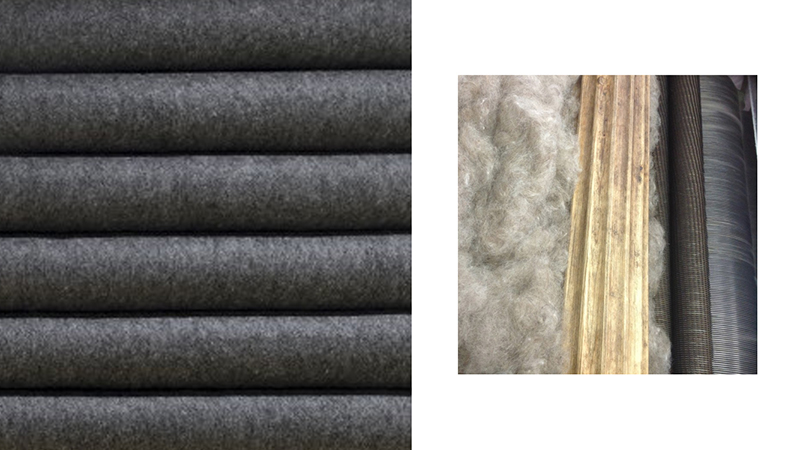
“In 2006-2007 when you tried to approach sound engineering or people with acoustic knowledge, they were on such a fast track that they did not speak to anyone but people they were already working with. They couldn’t be bothered with people like me, artists with ideas.
“But then in 2008 the global downturn hit Iceland exceptionally hard and everything froze. (Ed.Note: Purportedly meaning from a business standpoint, but given that she was talking about Iceland…who knows!). Projects just vanished. Up to that point the average person in Iceland didn’t think too highly of Icelandic wool, but suddenly it was a time to try new ideas, and working with our own natural resources and realizing the real value of turning them into quality products became the latest trend.”
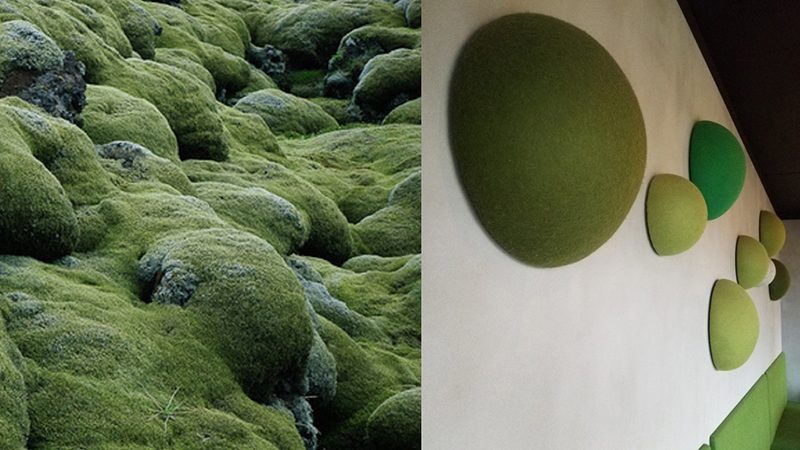
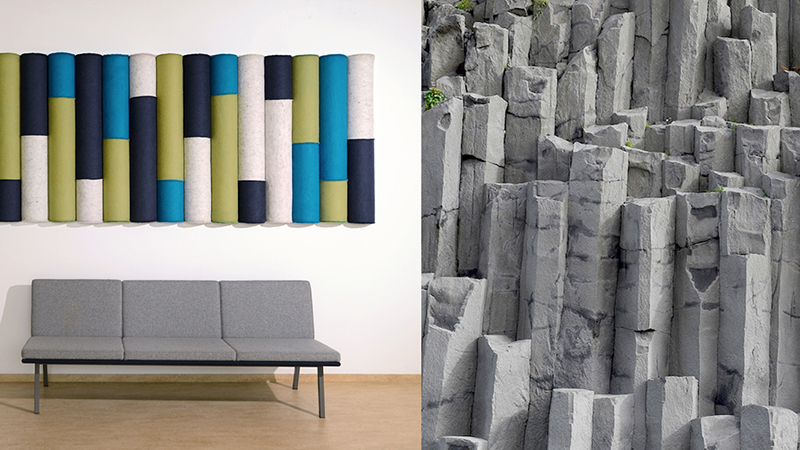
So with her ongoing fascination with the material, the machinery to produce the felt, and her artistic heritage all in place, Ms. Bolladottir turned her attention to creating products that could be manufactured in repetitive quantities at a consistent quality to be sold broadly.
She wanted her creative work to meet specific criteria: it had to be simple and impressive at the same time, have novel and even playful functionality, feel natural to the senses and pleasing to the eye.
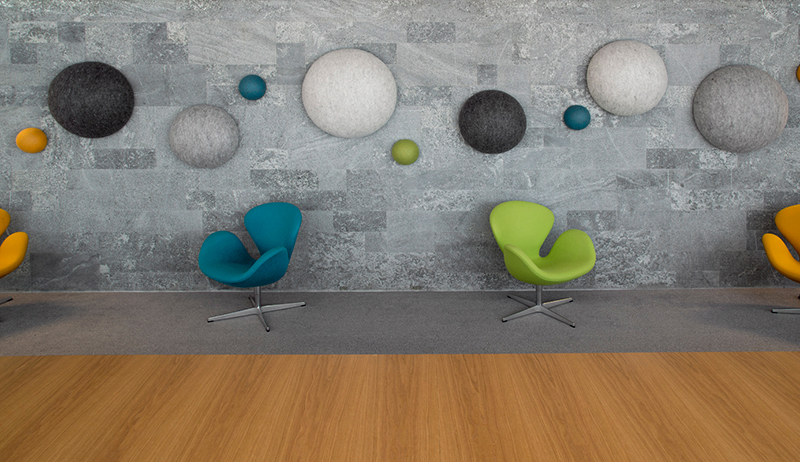
“Between 2009 and 2012, I developed many things that had been in my studio for some time. I worked with sound engineers, architects, designers and people with the appropriate acoustical knowledge and training. In 2012 one of my designs got the highest international rating for acoustics (ISO11654 Class A Sound Absorption), and finally I had a product!”
“Working with sound engineers and those with knowledge of acoustics, I learned a lot. They taught me how sound works, but I see images in my head. I see sound in 3D. I see how sound travels in a space. Now I understand how it travels in different rooms. To kill the sound, I wanted to work with basic forms that people could understand, so I decided on a circle and a line. [Unika Vaev’s] Kula is a sphere and Lina Cylinder is a line.”
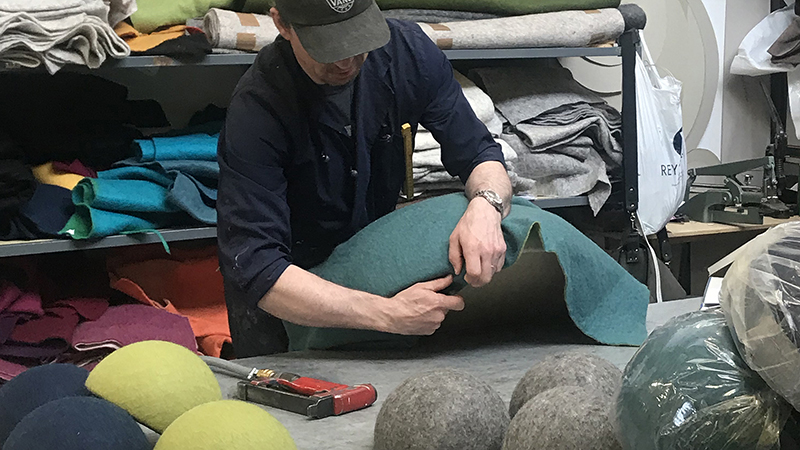
While the shapes are basic and familiar, they are nonetheless effective when deployed with careful consideration of the physical laws that govern how sound travels.
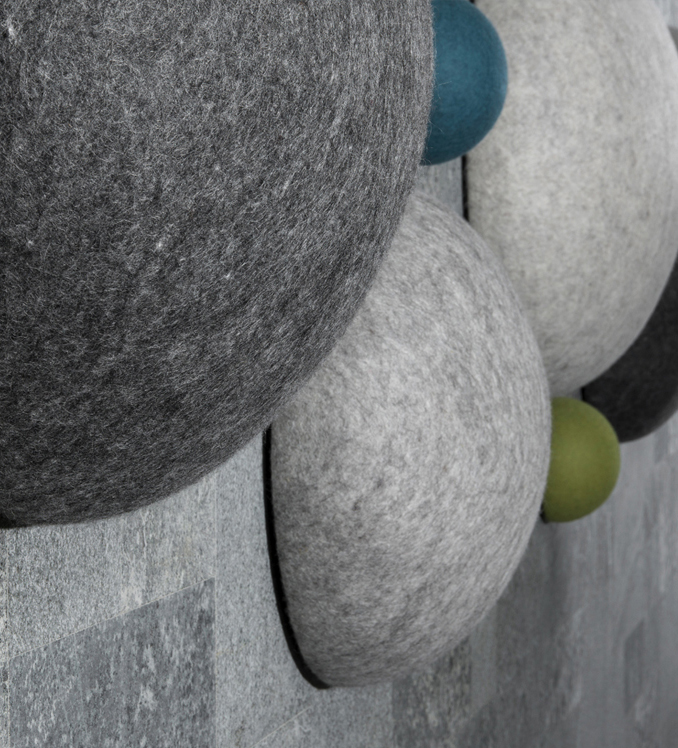
“My idea was to make something for creative architects and designers to use the products in projects in ways that pleased them, but I knew I had to give them a tool to help them understand how to use it,” Ms. Bolladottir said. “I’m not just giving them something square to cover the whole wall or ceiling. I’m giving them a different approach they can use creatively. But, there are rules that have to be followed to realize the sound absorbance.”
The rules are based on the role of deflectors and absorbers in sound management, and Ms. Bolladottir has developed simple guidelines that allow for significant creativity in the placement of the products in a space.
The Kula and Lina Cylinder product lines have gained interest and recognition internationally due to their functionality and style. At the Stockholm Furniture Fair, Kula was selected as one of the five most interesting functional products exhibited. As a result of the recognition at Stockholm, the products were invited to the London Excel design week exhibition. But it was at the Stockholm show that Ms. Bolladottir and her products came to the attention of the ICF Group. Soon thereafter, Wick Wolfe, Vice President of the ICF Group and General Manager of Unika Vaev, collaborated with her to introduce these important acoustical products to the North American market, and voilà – there she was at NeoCon 2018 next to a wall of Kula spheres showing me how they should be placed to maximize their effectiveness.
Unika Vaev is the exclusive distributor of Ms. Bolladottir’s products in North America.
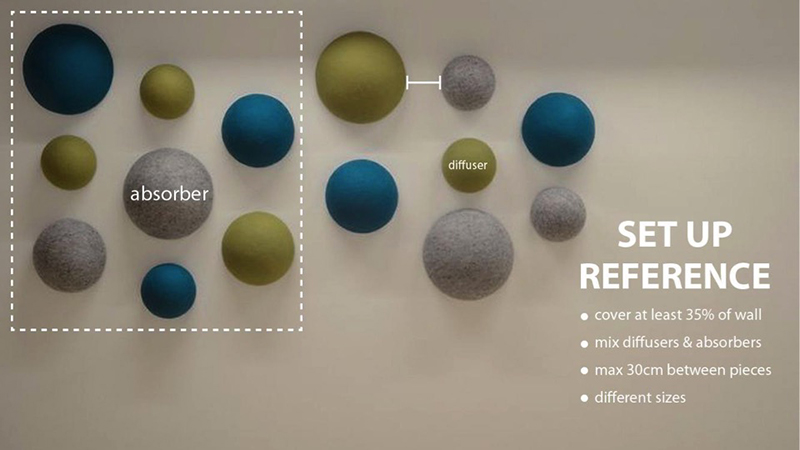
“North America is a huge opportunity for my products, and Unika Vaev is the perfect partner,” Ms. Bolladottir said. “For me working alone, it would be impossible to think of training all the creative architects and designers how to use the Kulas and Lina Cylinders, but Unika Vaev is recognized as a company that values both the artistic and acoustic properties of the products and has the infrastructure in place to help teach people how to use them.”
Ah, and now, as I promised earlier, here’s more on Icelandic sheep. Iceland is located at the junction of the North Atlantic and Arctic Oceans just below the Arctic Circle. Its climate is “Sub Arctic,” because it is warmed by the warm North Atlantic currents. Otherwise, I assume it would be as cold as its frozen nearest neighbor, Greenland, and other places of similar latitude.
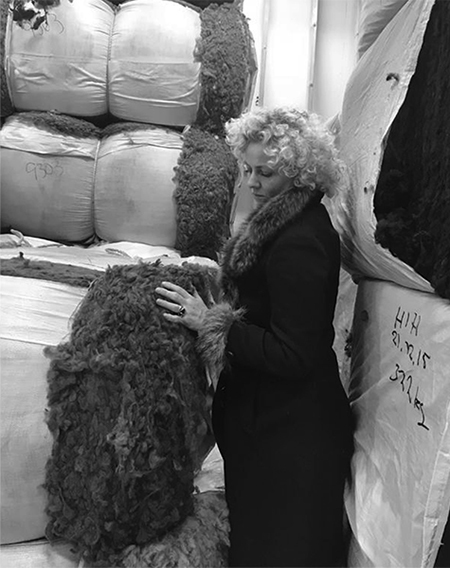
As a breed, the Icelandic sheep is truly unique – its purity protected by centuries of isolation and a total absence of contact with other breeds of sheep, resulting in a wool that is unparalleled.
The first Viking settlers arrived in Iceland in the second half of the 9th century, bringing with them two breeds of domestic livestock that have since become world-renowned; the Icelandic horse and the Icelandic sheep. Both would come to have a huge impact on the history and daily life of Iceland. While the hardy Icelandic horse served as a mode of transport and was used in agriculture, the Icelandic sheep has been the undoubted key to the nation’s survival.
From the first days of settlement, the Icelandic sheep has had to endure a relentless struggle against the harsh elements of the North Atlantic. Evolving over 1,100 years of exposure to the subarctic climate, Icelandic wool has a distinctive combination of inner and outer fibers. The outer fibers are long, glossy, tough and water-resistant, while the inner ones are fine, soft and insulating, providing an exceptionally high resistance to cold.
It is these special properties that Ms. Bolladottir has taken advantage of in developing her acoustic products. And it is to some extent these properties that make her products so effective. Colorful, playful, fun and effective; most definitely a great catch by Unika Vaev, and a great opportunity for those of you looking for something new to use where sound reduction is a priority.






